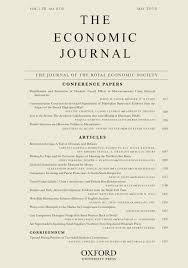
Beetsma, R. and Uhlig, H. (1999). An analysis of the Stability and Growth Pact. Economic Journal, 109(458 - October):546--571.
-
Affiliated author
-
Publication year1999
-
JournalEconomic Journal
We use a stylised model to analyse the Stability and Growth Pact for countries that have formed the European Monetary Union (EMU). In our model, shortsighted governments fail to internalise the consequences of their debt policies for the common inflation rate fully. Therefore, while governments have no incentive to sign a stability pact in the absence of a monetary union, they do so with monetary union to restrain this externality. With uncertainty, a monetary union combined with an appropriately designed pact will be strictly preferred to autonomy. With differences in initial conditions, conflicts of interest arise. We study the Nash bargaining solution.